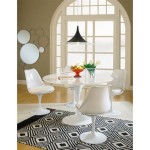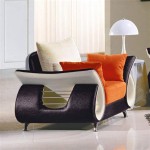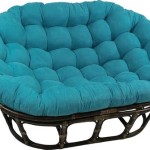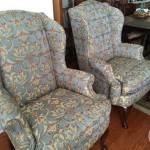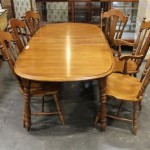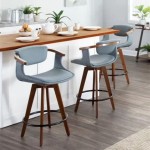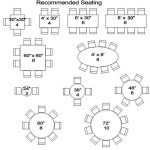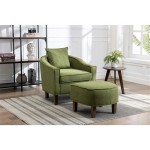Older Children's Table and Chairs: A Guide to Selection and Usage
The transition from toddlerhood to childhood brings significant changes in a child's physical and cognitive development. This evolution necessitates furniture that accommodates their growing size, increased independence, and evolving activities. Older children's tables and chairs are designed to provide a dedicated space for activities such as homework, art projects, board games, and even snack time, offering a more comfortable and functional alternative to using adult-sized furniture. Choosing the right table and chair set for an older child involves careful consideration of factors such as size, materials, design, and safety.
This article provides a comprehensive overview of the factors to consider when selecting a table and chair set appropriate for older children, focusing on features that promote comfort, safety, and functionality. It also addresses the importance of matching the furniture to the child's needs and the available space.
Key Considerations for Choosing Older Children's Tables and Chairs
Selecting the appropriate table and chair set for an older child requires careful consideration of several important factors. These include the child’s size and developmental needs, the intended use of the furniture, the available space, the materials used in construction, and safety considerations. Addressing these aspects comprehensively will contribute to a positive and productive experience for the child.
Size and Ergonomics
One of the most critical aspects of choosing a table and chair set is ensuring that it is appropriately sized for the child. A table that is too high or a chair that is too low can lead to discomfort, poor posture, and even potential musculoskeletal issues over time. The ideal setup allows the child to sit comfortably with their feet flat on the floor and their knees bent at a 90-degree angle. The table should be at a height that allows the child to rest their forearms comfortably on the surface without hunching their shoulders.
Standard height ranges for children's tables typically vary depending on age. For children aged 6-8, a table height of approximately 24-26 inches is generally suitable. For children aged 9-12, a table height of 26-28 inches may be more appropriate. Chair height should be correlated with the table height to ensure optimal ergonomics. A chair seat height of 14-16 inches is usually recommended for younger children in this age range, while a seat height of 16-18 inches is often appropriate for older children. Adjustable height chairs can offer increased flexibility as the child grows.
Besides height, the dimensions of the table surface are also important. A larger table surface provides more space for spreading out materials for activities, such as homework or art projects. However, it is crucial to consider the available space in the room to ensure that the table does not overwhelm the area.
Material and Durability
The materials used in the construction of the table and chairs significantly impact their durability, safety, and aesthetic appeal. Common materials include wood, plastic, and metal, each offering distinct advantages and disadvantages.
Wood is a popular choice for children's furniture due to its durability, natural appearance, and versatility. Solid wood tables and chairs can withstand considerable wear and tear and can be refinished or repainted to extend their lifespan. However, solid wood furniture tends to be more expensive than furniture made from other materials. Engineered wood, such as plywood or MDF (Medium Density Fiberboard), is often used as a more affordable alternative to solid wood. These materials can be durable, but it is important to ensure they are finished with non-toxic paints and sealants.
Plastic tables and chairs are lightweight, easy to clean, and often more affordable than wood furniture. They are also generally resistant to water damage, making them a good choice for messy activities. However, plastic furniture may not be as durable as wood furniture and can be more susceptible to scratching and cracking. It is important to choose plastic furniture made from high-quality, BPA-free plastic to ensure safety and longevity.
Metal tables and chairs are known for their strength and durability. They are often used in institutional settings, such as schools and daycare centers. Metal furniture can be more resistant to damage than wood or plastic furniture, but it can also be heavier and less comfortable. It is important to choose metal furniture that is properly finished to prevent rust and has rounded edges to minimize the risk of injury.
Design and Functionality
The design of the table and chair set should complement the child's personality and the overall décor of the room. In addition to aesthetic appeal, functionality is a key consideration. Tables with built-in storage, such as drawers or shelves, can be particularly useful for organizing art supplies, books, and other materials. Chairs with armrests can provide additional support and comfort, especially for older children who spend extended periods sitting at the table.
Tables with adjustable heights are highly versatile as they can accommodate children of different ages and sizes. Adjustable chairs offer a similar advantage, allowing the child to customize the seat height for optimal comfort and ergonomics. Foldable tables and chairs can be a practical option for smaller spaces, as they can be easily stored away when not in use.
Consider the child's specific activities when selecting a table and chair set. For example, a table with a smooth, non-porous surface is ideal for art projects involving paints and markers, as it is easy to clean. A sturdy table with a large surface area is suitable for building projects or board games.
Safety Considerations for Older Children's Furniture
Safety is paramount when choosing any furniture for children. It is essential to select tables and chairs that meet safety standards and are free from hazardous materials and design flaws. Parents and caregivers should prioritize furniture that promotes a safe and comfortable environment for the child.
Material Safety
Ensuring that the materials used in the construction of the table and chairs are non-toxic is crucial for protecting the child's health. Look for furniture that is certified to meet safety standards, such as those set by the Consumer Product Safety Commission (CPSC). These standards typically address the use of lead, phthalates, and other harmful chemicals in children's products.
Paints and finishes used on the furniture should be non-toxic and lead-free. Check the product label or manufacturer's specifications to confirm that the furniture is safe for children. Avoid furniture that has a strong chemical odor, as this may indicate the presence of volatile organic compounds (VOCs), which can be harmful to health.
If choosing furniture made from engineered wood, ensure that it is CARB (California Air Resources Board) compliant. CARB standards regulate the formaldehyde emissions from composite wood products, helping to reduce the risk of exposure to this potentially harmful chemical.
Structural Stability
The structural stability of the table and chairs is essential for preventing accidents and injuries. The furniture should be sturdy and well-balanced, with no wobbling or instability. Check that all joints and connections are securely fastened and that the table and chairs can support the child's weight without tipping over.
If purchasing a table with folding legs, ensure that the locking mechanism is robust and secure. A weak or faulty locking mechanism can cause the table to collapse unexpectedly, potentially leading to injury. Similarly, if choosing a chair with adjustable height, verify that the adjustment mechanism is reliable and prevents the chair from suddenly dropping in height.
Regularly inspect the table and chairs for signs of wear and tear, such as loose screws, cracks, or splinters. Repair or replace damaged furniture promptly to prevent accidents.
Design Features
The design of the table and chairs should incorporate safety features to minimize the risk of injury. Rounded edges and corners are preferable to sharp edges, as they reduce the likelihood of cuts and scrapes. Avoid furniture with small, detachable parts that could pose a choking hazard to younger children.
Chairs with a wide base are more stable and less likely to tip over. Consider choosing chairs with non-slip feet to prevent them from sliding on smooth surfaces. Armrests can provide additional support and stability, but it is important to ensure that they are not too high or too low for the child's comfort.
The table surface should be smooth and free from splinters or rough patches. A non-slip surface is also desirable, as it can help prevent items from sliding off the table.
Adapting Furniture to the Child's Needs and Space
Matching the furniture to the child's individual needs and the available space is essential for creating a functional and comfortable environment. Consider the child's specific activities, preferences, and learning style when selecting a table and chair set. Also, assess the dimensions of the room to ensure that the furniture fits comfortably without overcrowding the space.
Individual Needs and Preferences
Consider the child's specific needs and preferences when choosing a table and chair set. For example, if the child enjoys art projects, a table with a smooth, easy-to-clean surface and built-in storage for art supplies may be ideal. If the child spends a lot of time reading or doing homework, a comfortable chair with good back support and a table with adjustable height may be more appropriate.
Involve the child in the selection process to ensure that they are happy with the furniture. Allow them to choose the color or style of the table and chairs, or let them test out different chairs to find one that is comfortable for them. This will help to foster a sense of ownership and encourage them to use the furniture regularly.
If the child has any specific physical needs or disabilities, it is important to choose furniture that can accommodate these needs. For example, a child with mobility issues may benefit from a chair with armrests and a table with ample legroom. A child with sensory sensitivities may prefer furniture made from natural materials with a smooth texture.
Space Considerations
Carefully measure the available space before purchasing a table and chair set. Consider the dimensions of the room and the placement of other furniture to ensure that the new furniture will fit comfortably without obstructing traffic flow or creating a cluttered appearance. Leave adequate space around the table and chairs to allow the child to move freely and comfortably.
For smaller spaces, consider choosing a table and chair set that can be easily folded away when not in use. These sets are ideal for maximizing space and creating a flexible learning or play area. Alternatively, consider choosing a smaller table and chair set that is appropriately scaled for the room.
In larger spaces, consider creating a dedicated area for the child's table and chairs. This can help to define the space and create a sense of focus and purpose. You can also add other furniture and accessories to the area, such as shelves, bookshelves, or a rug, to create a more inviting and functional learning or play environment.
Ultimately, the selection of older children's tables and chairs requires a multifaceted approach, balancing ergonomic needs with safety considerations, material choices, and spatial constraints. Thoughtful planning and careful evaluation will result in a productive and comfortable environment for the child's learning and creative pursuits.

Funlio Kids Table And 2 Chairs Set Height Adjustable For Ages 3 8 Cpc Ce Approved Natural

5 Piece Mdf Top Kiddy Table And Chair Set With 4 Chairs Cartoon Animals 2 7 Years Old

Kids Table Set

Children S Adjustable Table And Chair Set For Kids 1 5 10 Year Old Ebay

Qaba 3 Piece Set Kids Wooden Table Chairs Easy To Clean Gift For Boys Girls Toddlers Age 8 Years Old Grey Aosom

Hassch Kids Table With 4 Chairs Set 5 Piece Kiddy And Chair Wood Cartoon Animals Backrest Toddler

Dropship Kids Table And Chair Set With Storage Chairs For 2 5 Toddler 4 Year Old Activity To Sell Online At

5 Piece Mdf Top Kiddy Table And Chair Set With 4 Chairs Cartoon Animals 2 7 Years Old

Qaba Kids Table And Chair Set With 4 Chairs Adjustable Height Easy To Clean Surface For 1 5 Years Old Pink Aosom Com

Handmade Wooden Bunny Ear Kids Table And Chair Set Furniture Toddler Montessori Activity Etsy
